Is it possible to bring ventilation to the attic in a private house? The best accommodation options
The ventilation system of a private house should provide an influx of fresh air to all rooms of the house and stimulate its renewal. The duct system and the air inlet openings are called supply air. Ducts and openings for exhaust - exhaust. Everything seems to be simple.
But in practice, the question of the most efficient ventilation system design is one of the most controversial. One of the most controversial issues: is it possible to bring ventilation to the attic. It might be better to dispose of the exhausted and contaminated air mass directly, i.e. through the wall?
In the article we presented, all aspects of the construction of a ventilation system for a country house are analyzed. We will introduce the regulatory requirements and nuances of the organization. Our recommendations will help determine the most practical option.
The content of the article:
- SNiP requirements for ventilation systems
- The consequences of improper ventilation
- Natural ventilation with access to the attic
- Combined vent output to the attic
- The inclusion of the attic in the ventilation system
- Supply and exhaust ventilation with recuperator
- Condensation in the attic is not terrible
- Conclusions and useful video on the topic
SNiP requirements for ventilation systems
SNiP requirements can be considered excessive, but it is still necessary to fulfill. They clearly prescribe not only the minimum necessary air exchange for each of the rooms, but also regulate the characteristics of each of the elements of the system - air ducts, connecting elements, valves.
The necessary air exchange is:
- for the basement - 5 cubic meters per hour;
- for living rooms - 40 cubic meters per hour;
- for the bathroom - 60 cubic meters per hour (plus a separate duct);
- for a kitchen with an electric stove - 60 cubic meters per hour (plus a separate duct);
- for a kitchen with a gas stove - 80 cubic meters per hour with one working burner (plus a separate duct).
It is logical to equip a bathroom and kitchen forced ventilation system even if for the rest of the house is quite natural. Air exhaust from the basement in order to avoid the concentration of carbon dioxide heavier than air in it is also often provided by a separate duct.
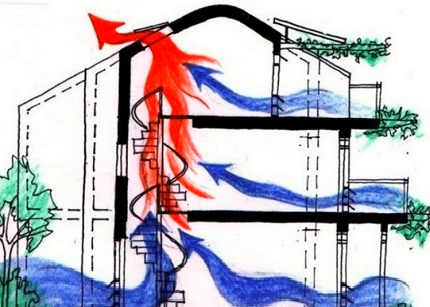
Homeowners who are not ready to turn the roof of the house into a palisade of ductwork often think about how best to arrange ventilation communications within the attic. After all, I would like the design to be not too bulky.
But is it possible to remove the exhaust air through the roof structure and its supporting frame - the rafter system? And if this solution is acceptable, how best to implement it? What equipment will be needed for the arrangement?
The consequences of improper ventilation
If the project did not provide for the organization of a heated insulated attic, then, as a rule, in private houses, the attic is an unheated room. The temperature in the attic is lower than in the house. When warm air from the duct, saturated with moisture from breathing, electrical appliances, heating systems, enters a colder room, moisture condenses.
In summer, this can lead to the formation of fungus and even rotting of the floors. In winter, moisture freezes and turns into frost and ice. There is nothing good in these snow and ice growths either. In winter, they contribute to the occurrence of microcracks. In the summer, the attic can melt and flood.
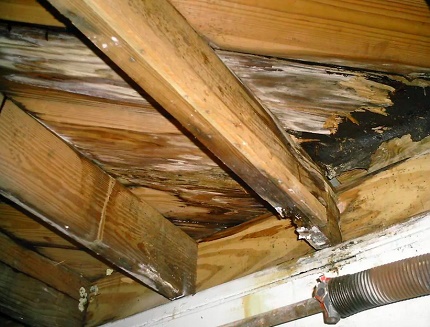
There is a solution: to bring ventilation to the attic in a private house, a number of important conditions must be observed, these are:
- the presence of a ventilation outlet from the attic to the street;
- a device in the attic space of the attic with its own ventilation system;
- installation of a mechanical ventilation system in the house - forced-air and exhaust with a recuperatorinstalled in the attic.
Depending on whether the ventilation system is forced, natural or combined, its methods of withdrawal to the attic also differ.
Natural ventilation with access to the attic
Gravity, it is also natural ventilation provides air circulation according to the principle familiar from school: warm air is lighter than cold. Warm air rises through the exhaust ducts located as high as possible. The colder air from the supply air ducts enters the house.
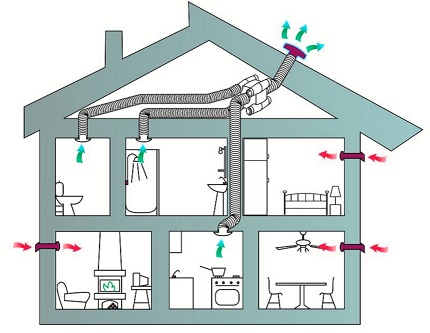
If in the attic and in the roofing pie competently arranged effective subroof ventilation, the exhaust systems can be fully or partially combined.
The circulation and removal of contaminated air mass within the attic will provide the action:
- fan risers;
- aerators (air duct with access to the street, forcing constant air circulation in the attic);
- competent device of a roofing cake (the simplest is ventilation with the help of 2 gaps under the roof and over the rafters);
- roof gates that crash directly into the roof system.
If a natural ventilation system is organized within an unheated attic, the rational solution is to combine all the ventilation pipes in the attic for output through a common ventilation shaft.
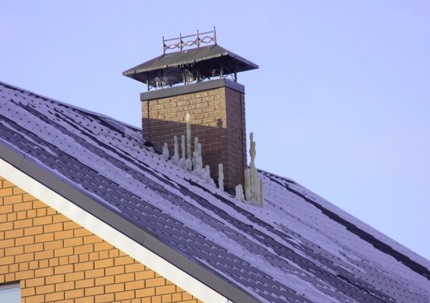
With adequate ventilation of the attic, condensation does not accumulate on it. Unfortunately, far from always roofing gates or attic gaps provide it fully.
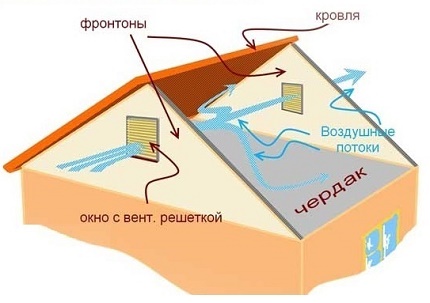
Hearing and ventilating attic windows that can be closed and opened should provide greater air circulation than other methods of natural attic ventilation. For example, supply and exhaust openings drilled in gables.
Combined vent output to the attic
A good solution for the simplest ventilation system is:
- separate conclusion to the attic kitchen exhaust pipes and a bathroom with forced draft;
- a separate outlet to the attic with further accession to the fan riser (or without connection) of exhaust pipes from other residential premises.
This is the easiest and most effective way to provide ventilation at home without a supply and exhaust ventilation system with a recuperator.
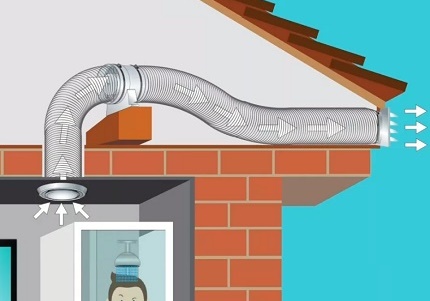
Fans of combined versions of ventilation systems work either for exhaust hood or for supply. In the first case, fresh air itself enters, trying to fill the freed space. In the second case, a portion pumped from the street removes the spent air mass from the room.
The inclusion of the attic in the ventilation system
The attic instead of the attic is essentially another room. Which is good from the point of view of optimizing living space, but somewhat complicates the installation of the ventilation system in the traditional way.
There should be a ventilated attic space between the attic and the roof. Fresh air needs to be able to circulate freely in the roofing cake and within the attic or equipped attic.
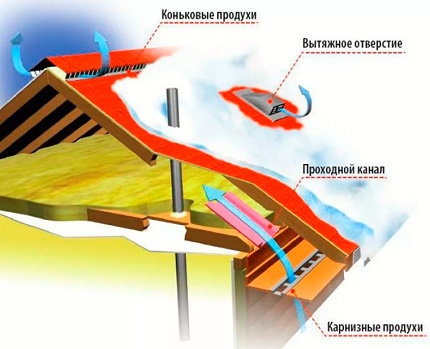
In the process of constructing a roofing cake, air vents are necessarily constructed — longitudinal ventilation openings. They begin with the eaves line, end at the ridge line. They are provided with the installation of crates and counter battens on the rafter legs.
In the area of the cornice, street air enters these ventilation ducts. In the area of the ridge, the air stream leaves, taking with it condensation and household fumes that have penetrated from the living quarters into the attic space.
The ventilation system of the rest of the house is also displayed in the attic. Exhaust ducts and risers from the house and from the attic can be combined and closed to the aerator. However, you must be sure that the air circulation will be sufficient.
Supply and exhaust ventilation with recuperator
This is the easiest, most expensive way to get ventilation to the attic. It is necessary to purchase a recuperator - a device that provides the movement of air flow with the simultaneous addition of a fresh portion of air and heating it to a comfortable temperature.
The entire circulation system is closed to the recuperator, the principle of its operation is quite simple. Heat from heating devices, boiler rooms is often wasted. So why not use it to partially heat cold air?
Cool air sucked in recuperator from the street, it is not only prepared by mixing with an already heated air mass, but also cleared of harmful and unpleasant impurities suspended in the air. In addition, the recuperation equipment is equipped with heaters that heat the air flow.
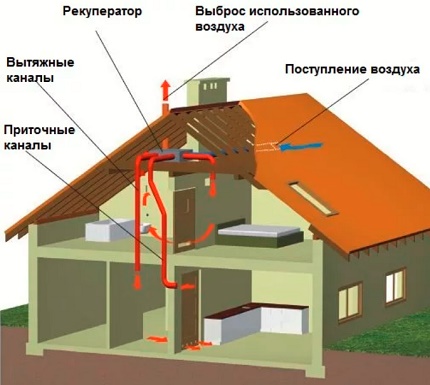
A prerequisite for the functioning of the system with an integrated recuperator is its coercion. Air enters the room and is removed from it by two constantly working fans. Otherwise, the recuperator simply will not work, the device has too much aerodynamic drag.
Valves and dampers are installed along the entire length of the ducts for proper flow distribution. At the inlet and outlet of the recuperator, additional nets must be installed to prevent dust and grease from entering the device. Exit to the street is closed by additional bars from birds, insects.

Modern recuperators can be programmed using the buttons on the control panel. Such devices cost even more, but the ease of use makes them attractive.
And what about condensate, the main problem in the attic? Condensate does not accumulate in the recuperator, does not settle on the walls and beams of the attic, but flows quietly and peacefully into a pan located under the device.
In winter, in an unheated attic, this can be a problem, because in severe frosts the capacity of the recuperator may not be enough. In this case, you can install another heating device next to the recuperator box.
Condensation in the attic is not terrible
The main enemy of ventilation systems in the attic is condensate. The cheapest way to deal with it is to bring the natural ventilation system to a well-ventilated cold attic with a full or partial closure of the system to a fan pipe or some other exhaust ventilation device.
If instead of the attic the attic is equipped in the house, one should not forget about integrating the attic into the ventilation system or creating a separate ventilation system for the attic and the rest of the house.
A forced ventilation system with a recuperator installed in the attic is the easiest, but also the most expensive way to bring the ventilation system to the attic.
Conclusions and useful video on the topic
Thoughtlessly putting ventilation in the attic is not a good idea:
Guidance on the installation of ventilation components in a gable or gable roof:
Features of the device and the action of natural ventilation in the attic:
Properly organized ventilation in the attic and in an unheated attic space will provide a normative microclimate in the residential area and extend the life of structures.
However, when removing all ventilation components to the attic, building rules must be followed. At the same time, the condensate must be completely removed from the exhaust air, from which elements made of wood and metal are virtually equally affected. From moisture, they lose their bearing capacity.
Tell us about how and how ventilation was vented through your own attic or attic. Share useful information on the topic of the article, which will help interested visitors to the site. Please leave comments in the block below, post a photo on the topic, ask questions.

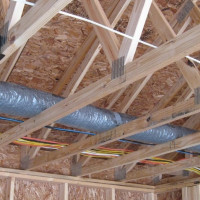 Ventilation in the house from sip panels: the best options and layouts
Ventilation in the house from sip panels: the best options and layouts 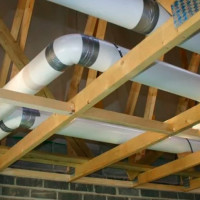 Ventilation from plastic sewer pipes in a private house: the possibility of construction and the best options
Ventilation from plastic sewer pipes in a private house: the possibility of construction and the best options 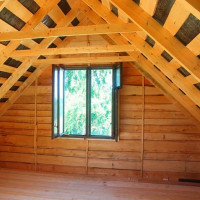 Attic ventilation in a private house: how to make ventilation through gables and dormers
Attic ventilation in a private house: how to make ventilation through gables and dormers 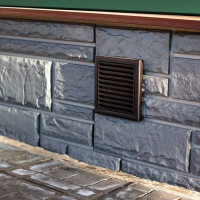 Natural ventilation in a private house: rules for arranging a gravitational air exchange system
Natural ventilation in a private house: rules for arranging a gravitational air exchange system 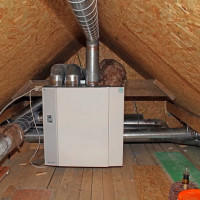 Ventilation in a two-story private house: options for organizing trouble-free air exchange
Ventilation in a two-story private house: options for organizing trouble-free air exchange 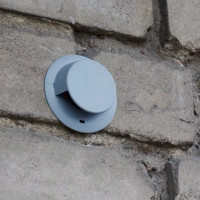 Ventilation in a private house from aerated concrete: options and methods of construction
Ventilation in a private house from aerated concrete: options and methods of construction  How much does it cost to connect gas to a private house: the price of organizing gas supply
How much does it cost to connect gas to a private house: the price of organizing gas supply  The best washing machines with dryer: model rating and customer tips
The best washing machines with dryer: model rating and customer tips  What is the color temperature of light and the nuances of choosing the temperature of the lamps to suit your needs
What is the color temperature of light and the nuances of choosing the temperature of the lamps to suit your needs  Replacement of a geyser in an apartment: replacement paperwork + basic norms and requirements
Replacement of a geyser in an apartment: replacement paperwork + basic norms and requirements